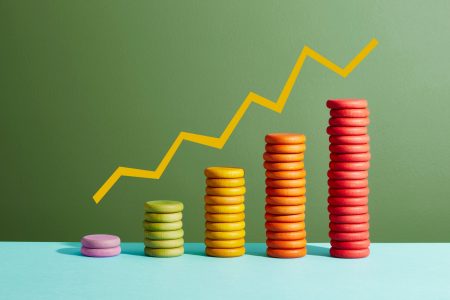I’m not sure I could have asked for much more than what Crane (NYSE:CR) has done since it announced it was splitting Crane and Crane NXT (NXT). Not only did I like that decision, I’ve really liked management’s pivot toward growth opportunities in Process Flow (or PF), it’s new M&A program, and I feel like the messaging to the Street has been on point, not to mention the execution.
The market has noticed, sending the shares over 60% higher since my last update, handily beating the broader industrial sector and just about any like-for-like rival you care to mention.
I’m clearly a big fan of what management is doing here, and I think a more growth-oriented PF segment and the underlying market growth opportunities in Aerospace and Electronics (or AE) can drive mid-single-digit organic growth and meaningful margin leverage. A lot is already expected in that valuation, though, and while I do see enough reasons to stay positive, this is no longer a hidden gem type of story.
Pivoting To Growth And Margins In PF
Once a somewhat sleep and cyclical fluid handling business (valves, pumps, specialty pipe, et al), Crane has put a fair bit of work into repositioning the PF business toward better growth and margin opportunities. Businesses with more cyclicality, less impressive secular growth potential, and less willingness to pay up for innovation (like oil/gas, energy, and non-residential buildings) have been deprioritized, and management has been getting more active on pricing to better align prices with the value of the offerings.
On the growth side, Crane is targeting markets like LNG, hydrogen, pharma, water, automation, and what I would call “sustainable chemicals” – chemicals made with different inputs or processes to reduce their carbon footprint and/or use or reduce waste streams.
Opportunities in hydrogen are fairly straightforward, as more industries look to replace traditional fossil fuel inputs with hydrogen, this business should continue to grow (steel companies, for instance, are starting to look into hydrogen and this could drive major growth). Should hydrogen become more relevant in mobility (more likely trucks and trains than passenger vehicles), there’s even more upside. Management has already done a couple of deals to boost its capabilities in hydrogen (not unlike what Dover (DOV) did a little while ago), and this is a credible growth market.
I’m also curious to see what the company will do in areas like pharma and possibly electronics down the line. Management has been developing products with higher specifications to handle the more exacting needs of biologicals (antibodies, et al) production, including recent expansion into products for antibody drug conjugate production, and I think a greater focus on high-spec systems could eventually pave the way to get more involved in electronics as well.
In the meantime, trends are mixed. As I said in that last article, I expected headwinds in 2024 from end-markets like chemicals, general industrial, non-residential, and pharma, and that’s what has been happening, pushing Crane’s organic growth here to modest contraction in the last two quarters. Orders and backlog are still growing, though, and I think Crane will be fine in 2025.
AE Offers Long-Term Opportunity Beyond Near-Term Noise
Aerospace has been one of the hot end-markets in the industrial sector for some time, with many companies (I’m thinking of Eaton (ETN) and Parker Hannifin (PH) among others) spending significant sums on M&A to position themselves for what should be a decade-long run of production growth and then years of high-margin aftermarket sales afterward. Crane is more than just a participant here, and this should be a significant growth driver for years to come.
While the long-term aero story remains strong, there have been concerns of late about the near-term risk of further production delays and shortfalls as Airbus (OTCPK:EADSY) and Boeing (BA) deal with various issues that are very likely to lead to 2024 production coming in below prior targets. In the case of Crane, though, there really isn’t much risk here – when near-term production stumbles, Crane can easily shift most of its products from the original equipment market to the aftermarket, where it enjoys higher prices and margins anyway. With narrowbody production disappointing, more older jets have had to remain in service, driving strong aftermarket demand for Crane, Melrose (OTCPK:MLSPF), and others in the market.
On a related note, I like how Crane takes a platform-agnostic approach to its aerospace product development. There are risks in not partnering on pre-specified programs, but Crane management understates its markets and what its customers need, and this makes the company less tied to specific wins (and/or shortfalls in production of specific aircraft) and less vulnerable on margins, as OEMs will often squeeze suppliers hard for first-fit products.
Original equipment sales have been picking up lately, but aftermarket remains very strong and margins continue to grow nicely here (over 22% on a segment level last quarter). With multiple defense programs ramping up (including radar, missile, and aircraft programs), improving narrowbody production, and the real expansion in widebody production still to come, I think management’s target of 7% to 9% growth in aerospace is definitely achievable over the next three to five years.
The Outlook
With multiyear strength in aerospace and new growth markets in process flow, I think Crane can grow revenue at a strong mid-single-digit organic pace. This is going to be complemented by an active M&A program, with the company so far sticking to its target of one meaningful deal per quarter (two of which are relevant to emerging opportunities like hydrogen and pharma).
Seeing a few quarters of execution and understanding more about what management is looking to do as it pivots to sustainably higher-margin market opportunities, I’m more confident in that 23% EBITDA margin target for 2028, and I think a 20% EBITDA margin in or before 2026 is pretty likely. With that, I see free cash flow margins moving fairly quickly toward the mid-teens, and there could be some further upside there.
The problem is that the market already expects that and then some. It’s tricky to model in M&A, but in the case of Crane you pretty much have to or the numbers just don’t work. I’m comfortable with the idea that Crane will see actual reported revenue growth in the double-digits on the back of M&A, but that hardly makes for conservative modeling.
Valuation isn’t any simpler with my margin and return-driven EV/EBITDA methodology. Crane’s improving profitability can support an above-average EBITDA multiple, but even a 15x multiple (which includes some credit for above-average top-line growth potential, which the market does reward), I can’t get to an attractive fair value this way.
The Bottom Line
Crane is a good litmus test for how much an investor emphasizes valuation over story and improving fundamentals. It takes some aggressive assumptions to support a fair value in the $160’s (my discounted cash flow-based fair value estimate), but Crane appears to have an above-average sustainable multiyear growth story, and the market has shown over and over again it will pay for above-average revenue growth and margin leverage.
There are more risks here now because of the valuation, and I’m more inclined to wait for a pullback, but it’s hard to argue with a company that is delivering beat-and-raise performances and outlining a path to higher sustained growth and margin levels in the years to come.
Read the full article here















